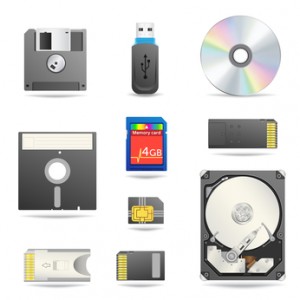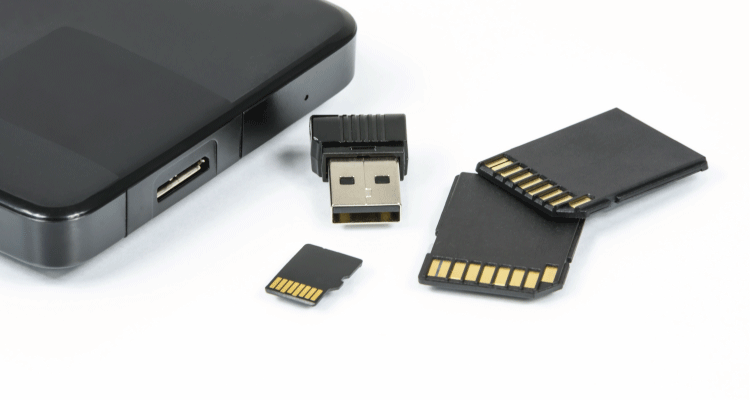
From movies to songs, from documents to other files, all types of data require storage for access in future. Certain devices called storage devices fulfill this purpose. A storage device is a device that is used to store data. It is basically a hardware that is capable of storing any types of information or data permanently or temporarily. A storage device can be classified as a primary storage device or a secondary storage device. A primary storage device can be a computer RAM and this type of storage device holds the data temporarily in a in files as long as it is needed. A primary storage device is basically an example of volatile memory. Volatile memory is the type of memory that allows the contents to be erased or removed. A primary memory is volatile in nature and hence is erasable. It basically stores information and data for a short period of time. This type of storage is basically the fastest type of memory and includes RAM, cache memory and so on that store the data while being used . Also known as auxiliary or external storage, secondary storage device have become one of the most valuable assets these days. Secondary storage devices are basically used to store permanently the data and are non volatile in nature as the data is non erasable and it stays as long as it is not deleted or overwritten by the user. These store data offline and are removable from the computer systems. Even though primary memory is faster than secondary, but because of high price and size limitations, and the fact that the primary storage loses it data when the computer is turned off, secondary storage devices are of most common use today. There are a number of secondary storage devices available in the market these days. These can be optical drives such as DVDs and CDs, USB thumb drive or flash drives or pen drives, magnetic tape, floppy disk, portable hard disks and so on
Cache
A cache acts a storage medium for storing the data temporarily for easy retrievals in future. Joined on the motherboard and installed on the core processor or the main RAM, this type of storage provides quicker access to the data and the processor does not need to go to the RAM or the hard drive to get the data again and again. Even though it has this great advantage of fast access and retrieval, it is limited by its high expense and limited size.
RAM
RAM stands for Random Access Memory and is the fastest storage that can attain very high transfer rates of data. Being an example of volatile memory, RAM loses its data when the computer is turned off and hence it requires power to access the data and hence a backup system is mostly used to backup the data. It is basically small in size and has a limited capacity of data storage. RAM can further be classified into static RAM or dynamic RAM depending upon whether the data needs to be refreshed again and again for maintaining it or whether the data holds till the time power is off.
Optical drives
The most common way of storing movies, songs, software to be distributed and so on is in CDs or DVDs. Due to their low cost per disk, they have become the most common form of storage these days. Being made of reflective material, such disks are approximately of diameter 4 1/2 inches and have a story capacity of about 600 MB. The major disadvantage is their very short life span.
Pen-drive
The biggest advantage of using pen drive is the fact that they are portable due to their small size and hence can be easily carried anywhere. They are much more robust than the traditional hard drives and are most widely used for backing up data. But because they are relatively expensive per GB, therefore they can be used to backup small amounts of data only. Such flash drives are removable and rewritable and have a memory capacity ranging from about 64 MB to 64 GB.
Floppy disks
Floppy discs are basically circular disks enclosed within a plastic square jacket with the circular disk having a magnetic oxide coating. These can be characterized as Magnetic storage devices that allow easy handling of data. Even though not much data can be stored in such disks, that is only about 1.4 mega bytes , still these were widely used do to their low cost for storing small texts and documents and mostly because of their portability.
External hard-disks
Being made of aluminium or other metal alloys and having a coating of magnetic material on both the sides, these disks are portable and can be plugged in and removed from a computer or laptop unlike the hard disc that are permanently attached to a computer. These hard disks have a large storage capacity used to backup data and can be used to store large amount of data ranging from about 160 GB to 3 TB and this is their major advantage over floppy discs for USB pen drives.
Nevertheless, any storage device that provides enough storage capacity and also provides easy retrieval is an idle storage device and can be used to store data and information.




1 Comment. Leave new
These are really good notes ➕ very easy to understand.